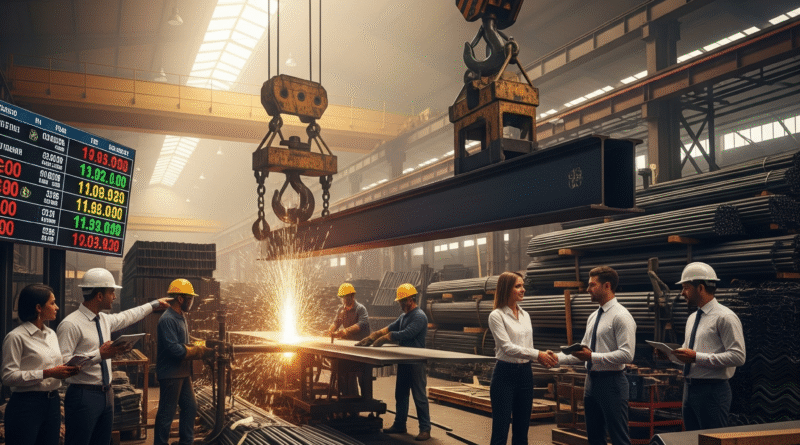Navigating the Iron Tide: What’s the Current State of the Global Steel Market?
As of mid-2025, the global steel market is a complex tapestry of contrasting trends, presenting both opportunities and significant challenges. While long-term projections hint at steady growth, the immediate future is characterized by a battle between sluggish demand, persistent overcapacity, and highly localized dynamics.
A Mixed Bag of Global Signals:
On one hand, the broader picture for the global iron & steel market shows a positive growth trajectory, with projections reaching over $1.7 trillion by 2030. This optimistic long-term view is underpinned by ongoing urbanization, industrialization, and massive infrastructure projects worldwide.
However, a closer look at 2025 reveals a more nuanced and, for many, a more difficult reality. Apparent global steel consumption is actually set for another decline this year, a downward revision from earlier, more hopeful forecasts. This is a clear indicator that demand is simply not keeping pace with the world’s burgeoning steelmaking capacity.
The Capacity Conundrum:
One of the most pressing issues is the looming shadow of excess capacity. With planned expansions globally, particularly across Asia (led by giants like China and India), there’s a real risk of capacity utilization falling even further. This imbalance inevitably intensifies downward pressure on prices and squeezes profitability for steelmakers worldwide.
Regional Divides: A Tale of Two Markets:
The global picture, however, doesn’t tell the whole story. Regional performance is highly divergent:
Asia Pacific: Remains the powerhouse, driven by industrialization and infrastructure. While China is seeing a decline in its domestic demand due to its property market slowdown and a strategic shift towards quality over quantity, it remains the largest producer and a significant exporter, leading to concerns about oversupply in global markets. In stark contrast, India is a blazing bright spot, with domestic steel demand projected to grow strongly (8-9% in 2025), fueled by robust infrastructure development and construction.
OECD Economies: Generally face a tougher road. Europe, in particular, is battling subdued economic growth, low domestic demand (especially from construction and automotive sectors), and increased credit risk for its steel industry.
North America: Shows more resilience, with growth driven by significant investments in infrastructure and construction. Tariffs on imports also provide a degree of protection for local producers.
Middle East & ASEAN: Are also demonstrating healthier growth in steel demand.
What’s Moving the Market? The Key Price Drivers:
Steel prices, as always, are a dance between various interconnected factors:
Raw Material Costs: The prices of iron ore, coking coal, and scrap metal are always fundamental. Fluctuations here directly impact production costs.
Supply and Demand: A classic economic principle – oversupply in a period of weak demand pushes prices down.
Energy Prices: Steelmaking is incredibly energy-intensive. High electricity and natural gas costs translate directly into higher production expenses.
Government Policies: Tariffs (like those in the US and potentially new safeguard duties in India) can significantly reshape trade flows and local prices. Environmental regulations, particularly the push for “green steel” and carbon pricing mechanisms (like the EU’s CBAM), add to operational costs but are crucial for long-term sustainability. Government-backed infrastructure spending also provides a vital boost to demand.
Global Economic Health: The overall strength of the world economy dictates industrial activity and, consequently, steel consumption.
Technological Advancements: Innovations in production efficiency, sustainable practices (like electric arc furnaces and hydrogen-based steelmaking), and recycling can influence costs and competitive landscapes.
Geopolitical Events: Conflicts and trade tensions introduce volatility and uncertainty into supply chains.
The Road Ahead:
For 2025, the global steel industry finds itself at a crossroads. While the long-term fundamentals for steel demand remain robust, the immediate future is marked by significant pressure from overcapacity and varied regional performance. Steelmakers will need to be agile, focusing on efficiency, cost optimization, and adapting to a rapidly evolving regulatory and geopolitical landscape. The emphasis on decarbonization and the “green steel” revolution will also increasingly differentiate players and shape market dynamics in the years to come.

